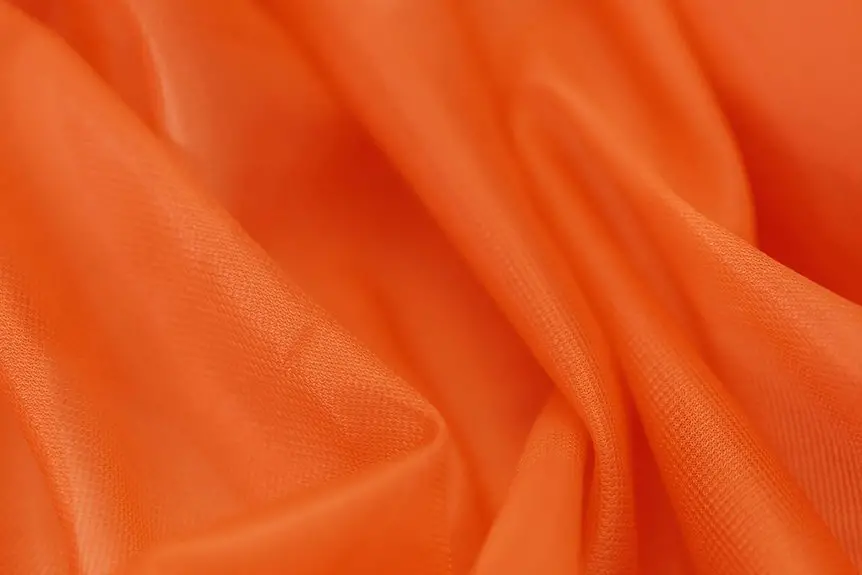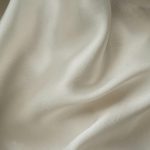You use nonwoven composite materials daily without much thought—they’re made by bonding fibers through heat, chemicals, or mechanical means to create strong, lightweight fabrics. These materials resist wear, moisture, and chemicals while offering flexibility and insulation. You’ll find them in everything from car interiors to medical gowns and construction insulation. If you want to understand how they’re made, their key benefits, and exciting innovations shaping their future, keep exploring this topic further.
Table of Contents
Key Takeaways
- Nonwoven composite materials combine fibers bonded mechanically, chemically, or thermally to form strong, lightweight fabrics.
- They offer enhanced durability, flexibility, and moisture resistance through unique fiber bonding processes.
- These materials are widely used in automotive, medical, construction, filtration, and consumer goods industries.
- Manufacturing techniques include needle entanglement, water jets, adhesives, and thermal fusion affecting their properties.
- Nonwoven composites provide excellent strength-to-weight ratios, chemical resistance, and customizable thickness and texture.
Defining Nonwoven Composite Materials
Nonwoven composite materials combine fibers and other components to create strong, lightweight fabrics without weaving or knitting. When you use these materials, you’re working with a blend where fibers are bonded through mechanical, chemical, or thermal means.
This bonding process gives the composite its unique structure and properties. You’ll find these materials designed to meet specific needs, such as enhanced durability, flexibility, or resistance to moisture.
Unlike traditional textiles, nonwoven composites don’t rely on interlacing threads but rather on the strategic arrangement and fusion of fibers. This allows you to achieve tailored performance characteristics, making these composites ideal for industries like automotive, medical, and construction.
Understanding this definition helps you appreciate the versatility and innovation behind nonwoven composites.
Manufacturing Techniques for Nonwoven Composites
Creating composite materials with specific properties depends heavily on the methods used to bond and arrange fibers. When manufacturing nonwoven composites, you can choose from several techniques, each influencing the material’s strength, flexibility, and durability. You’ll primarily encounter mechanical bonding, chemical bonding, thermal bonding, and hydroentangling. Knowing these methods helps you select the right process for your application.
| Technique | Description |
|---|---|
| Mechanical | Fibers entangled by needles or water jets |
| Chemical | Adhesives bind fibers together |
| Thermal | Heat melts fibers to fuse them |
| Hydroentangling | High-pressure water jets create entanglement |
Key Properties and Advantages
Durability and versatility stand out as key benefits when you choose composite materials made from nonwoven fabrics.
You’ll find they offer excellent strength-to-weight ratios, making them both lightweight and robust. These composites resist wear, tear, and environmental factors, which means they last longer in demanding conditions.
You also benefit from their flexibility in design, allowing for customization in thickness, density, and texture to fit your specific needs. Nonwoven composites provide good thermal and acoustic insulation, enhancing comfort and efficiency in your projects.
Plus, their resistance to chemicals and moisture means they maintain performance without degradation.
When you rely on nonwoven composite materials, you get a reliable, adaptable solution that meets diverse functional requirements without sacrificing durability or performance.
Common Applications Across Industries
Although you mightn’t always notice them, composite materials made from nonwoven fabrics play crucial roles in many industries.
You’ll find these materials enhancing product performance, durability, and efficiency, often where strength and lightweight properties matter most. Whether in your car, home, or healthcare setting, nonwoven composites are at work.
Here are some common applications you’ll encounter:
- Automotive: sound insulation, interior panels, and lightweight structural parts
- Construction: roofing membranes, wall insulation, and geotextiles
- Healthcare: surgical gowns, masks, and wound dressings
- Filtration: air and water filters for cleaner environments
- Consumer goods: mattress covers, wipes, and packaging materials
These applications show how versatile and essential nonwoven composites are across diverse fields.
Future Trends and Innovations
As nonwoven composite materials continue to evolve, you’ll see exciting innovations that make them stronger, lighter, and more sustainable.
Researchers are developing bio-based fibers and eco-friendly resins, helping reduce environmental impact without compromising performance.
You’ll also find advancements in smart composites embedded with sensors, allowing real-time monitoring for structural health in aerospace and automotive fields.
Additive manufacturing techniques are making it easier for you to customize composites with complex shapes and enhanced properties.
Plus, improved recycling methods mean you can expect more circular use of these materials.
As demand for high-performance, lightweight, and green solutions grows, nonwoven composites will play a bigger role in industries from construction to medical devices, offering you innovative options that meet your evolving needs.
Frequently Asked Questions
How Do Nonwoven Composites Compare to Woven Composites in Cost?
You’ll find nonwoven composites generally cost less than woven ones because they require simpler manufacturing processes and less labor. However, the price difference can vary depending on materials and specific applications you choose.
Are Nonwoven Composites Recyclable or Biodegradable?
You’ll find that nonwoven composites can be recyclable or biodegradable depending on their materials. Some use synthetic fibers, making recycling tricky, while others use natural fibers that break down more easily in the environment.
What Are the Environmental Impacts of Producing Nonwoven Composites?
Picture smoky skies and polluted rivers—producing nonwoven composites releases greenhouse gases and uses energy-intensive processes. You’ll want to contemplate these impacts when choosing materials to minimize harm and promote a cleaner, greener future.
Can Nonwoven Composites Be Customized for Specific Mechanical Properties?
You can definitely customize nonwoven composites to achieve specific mechanical properties by adjusting fiber types, orientations, and bonding methods. This flexibility lets you tailor strength, stiffness, and durability to fit your exact application needs.
What Safety Precautions Are Needed When Handling Nonwoven Composite Materials?
You should always wear gloves, safety goggles, and a dust mask when handling nonwoven composites. Work in a well-ventilated area to avoid inhaling fibers or dust, and follow specific manufacturer guidelines for safe use and disposal.
- The Use of Nonwovens in Construction and Civil Engineering - July 11, 2025
- The Use of Nonwovens in Construction and Civil Engineering - July 11, 2025
- The Use of Nonwovens in Construction and Civil Engineering - July 11, 2025







